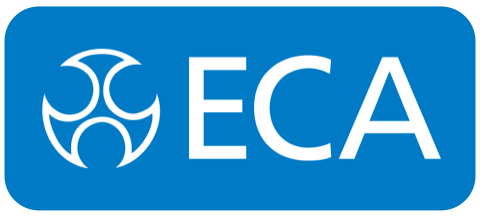- Home
- News
Comprehensive Guide to Electrical Safety Testing Standards 5 Must Know Insights for Global Buyers
In today's interconnected world, the importance of adhering to established Testing Electrical Safety standards cannot be overstated. For global buyers navigating the complex landscape of electrical products, understanding these standards is essential not only for compliance but also for ensuring the safety and reliability of their purchases. This guide aims to illuminate five must-know insights into electrical safety testing standards, which will empower buyers to make informed decisions and mitigate potential risks associated with electrical equipment.
As the market for electrical products continues to expand globally, so do the diverse testing requirements and safety regulations imposed by various countries. With the growing prevalence of electrical systems in our daily lives, prioritizing safety has become more critical than ever. This blog will delve into essential insights regarding Testing Electrical Safety, helping buyers grasp the nuances of different regulatory frameworks, compliance processes, and certification marks. By understanding these key elements, global buyers can ensure that the products they choose meet rigorous safety benchmarks and contribute to a safe operating environment.

Key Electrical Safety Testing Standards Impacting Global Trade and Compliance
In the ever-evolving landscape of global trade, compliance with electrical safety testing standards is paramount for manufacturers and buyers alike. As markets expand and technology advances, understanding the key regulations that govern electrical products can significantly impact a company’s ability to operate internationally. Different regions have established specific standards—such as IEC, UL, and CSA—that serve as benchmarks for safety and performance. Compliance with these standards not only ensures product safety but also facilitates smoother entry into various markets. One of the most critical aspects of electrical safety testing standards is the harmonization of regulations across borders. For businesses looking to export products, recognizing the differences and similarities between national standards is essential. For instance, while the UL standards prevalent in the United States focus heavily on product testing and certification, European markets often adhere to IEC standards that emphasize broader safety practices. This divergence can create confusion for manufacturers, making it crucial for global buyers to stay informed about the latest requirements and testing protocols. Additionally, the consequences of non-compliance can be severe, ranging from financial penalties to product recalls, and even damage to brand reputation. Therefore, buyers must engage with reliable suppliers and conduct thorough due diligence to ensure that products not only meet but exceed the required safety standards. By prioritizing compliance with electrical safety testing standards, global buyers can mitigate risks and foster trust with consumers, paving the way for successful international trade.

Understanding the Importance of IEC and UL Standards in Electrical Product Safety
Understanding the Importance of IEC and UL Standards in Electrical Product Safety
In today's interconnected world, ensuring the safety of electrical products is paramount for manufacturers and consumers alike. IEC (International Electrotechnical Commission) and UL (Underwriters Laboratories) standards play a critical role in providing guidelines and benchmarks that help ensure electrical safety. These standards are recognized globally, and adherence to them is often a prerequisite for market entry, fostering consumer trust and minimizing risks associated with electrical hazards.
The IEC standards focus on international safety measures for various electrical products, creating a universally accepted framework for manufacturers. By conforming to these standards, companies can demonstrate compliance and commitment to safety, which is essential in gaining competitive advantage in the global marketplace. In contrast, UL standards, predominantly recognized in North America, ensure that products have been rigorously tested and meet specific safety criteria. UL certification not only protects consumers from faulty electrical devices but also empowers manufacturers by enhancing their brand credibility.
As buyers navigate the complexities of sourcing electrical products, understanding these standards becomes vital. They are not merely sets of rules but rather essential tools that help mitigate risks, ensure quality, and facilitate smoother trade across borders. For global buyers, familiarizing themselves with IEC and UL standards can lead to better decision-making and product selection, ultimately contributing to a safer and more reliable electrical landscape.

Recent Statistics on Electrical Safety Incidents and the Role of Testing Standards
Recent statistics highlight a troubling increase in incidents involving young electrical workers, underscoring the critical importance of adhering to electrical safety testing standards. For example, a recent case involving a 21-year-old electrical apprentice who suffered serious injuries while working at a sewer pump station serves as a stark reminder of the potential dangers of our field. Such incidents emphasize the need for stringent safety protocols and training to protect those who are new to the profession.
Moreover, the hazards are not confined to traditional settings; incidents like the arc flash at a Google data center further illustrate the risks associated with electrical work, especially in high-stakes environments. This underscores the role testing standards play in mitigating risks. Testing and measurement equipment as part of North America's electrical safety products market are crucial in ensuring that safety protocols are not only met but continuously updated to reflect the latest safety practices.
As new technologies emerge, such as electric and hybrid vehicles, safety concerns evolve as well. Electric vehicles boast advanced safety features, yet they also come with new challenges that must be recognized and managed. The growing adoption of these vehicles necessitates that both operators and electrical professionals remain informed about their specific safety requirements to prevent injuries and incidents. The statistics are clear: understanding and applying electrical safety standards are essential for safeguarding lives in an increasingly electrified world.

Navigating Regional Differences in Electrical Safety Regulations for International Buyers
Electrical safety regulations vary significantly across different regions, creating a complex landscape for international buyers. Understanding these regional differences is crucial for compliance and risk management. For instance, while the United States relies heavily on standards set by Underwriters Laboratories (UL) and the National Fire Protection Association (NFPA), Europe often adheres to the International Electrotechnical Commission (IEC) standards. This divergence can lead to confusion and potential non-compliance if buyers are not well-versed in the specific requirements of their target markets.
Moreover, many countries have unique regulatory bodies and local standards that may not align with international norms. For example, countries in Asia may require additional certifications such as the Chinese Compulsory Certification (CCC) mark, while others have unique labelling and testing requirements. Buyers must research and identify which standards apply to their products in each market to avoid costly delays and penalties. Furthermore, understanding these standards can also enhance product quality, safety, and competitiveness in the global marketplace.
Lastly, keeping abreast of updates and changes in electrical safety regulations is essential. Regulatory environments are dynamic, with frequent updates and revisions to standards which may affect compliance and sales. International buyers should proactively engage with industry associations and standard-setting organizations to stay informed and ensure their products meet the latest requirements, ultimately paving the way for successful market entry and longevity.
Future Trends in Electrical Safety Testing: Innovations and Regulatory Changes in 2023
As the landscape of electrical safety testing evolves, understanding future trends is crucial for global buyers. In 2023, innovations in technology and regulatory changes are significantly shaping the way electrical products are tested and certified. A key development is the integration of artificial intelligence and machine learning into testing processes. These technologies streamline testing procedures, allowing for more accurate predictions of product performance and safety, thereby reducing time to market and increasing overall efficiency.
Additionally, the regulatory landscape is undergoing transformative changes aimed at enhancing consumer protection. With countries around the world tightening safety standards, global buyers must stay informed about these developments to ensure compliance. For instance, the introduction of harmonized standards across regions is making it easier for manufacturers to navigate the complexities of international compliance. As organizations strive for greater market access, understanding these harmonized regulations will be essential for effective product launch strategies.
Moreover, the focus on sustainability in electrical safety testing is gaining momentum. In response to increasing environmental concerns, regulatory bodies are establishing guidelines that emphasize the use of eco-friendly materials and production processes. Buyers should look for suppliers that adopt sustainable practices, not only to comply with these emerging regulations but also to meet the growing consumer demand for environmentally responsible products. This shift towards sustainability is not just a trend but a necessary evolution in the industry, aligning safety with environmental stewardship.

